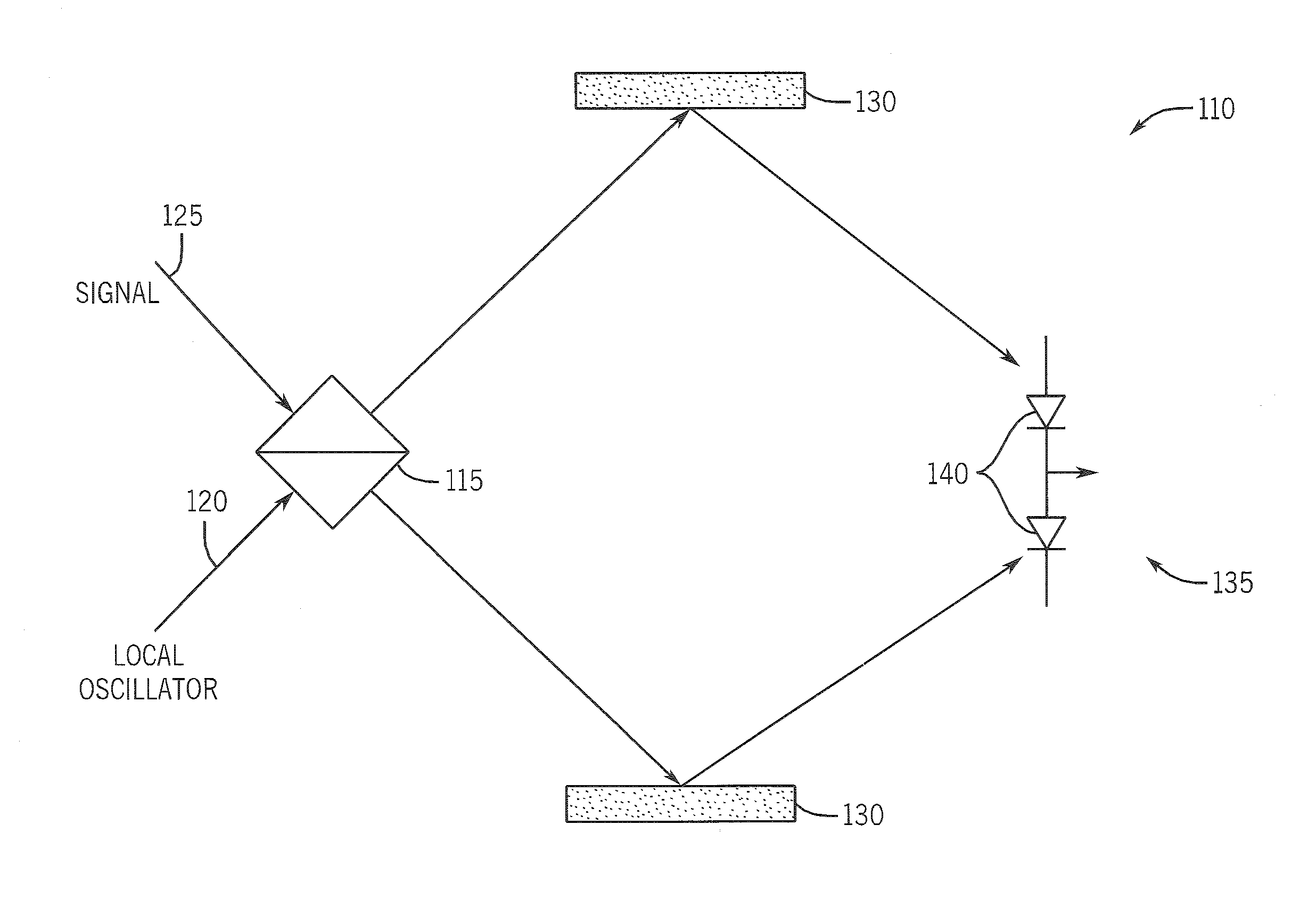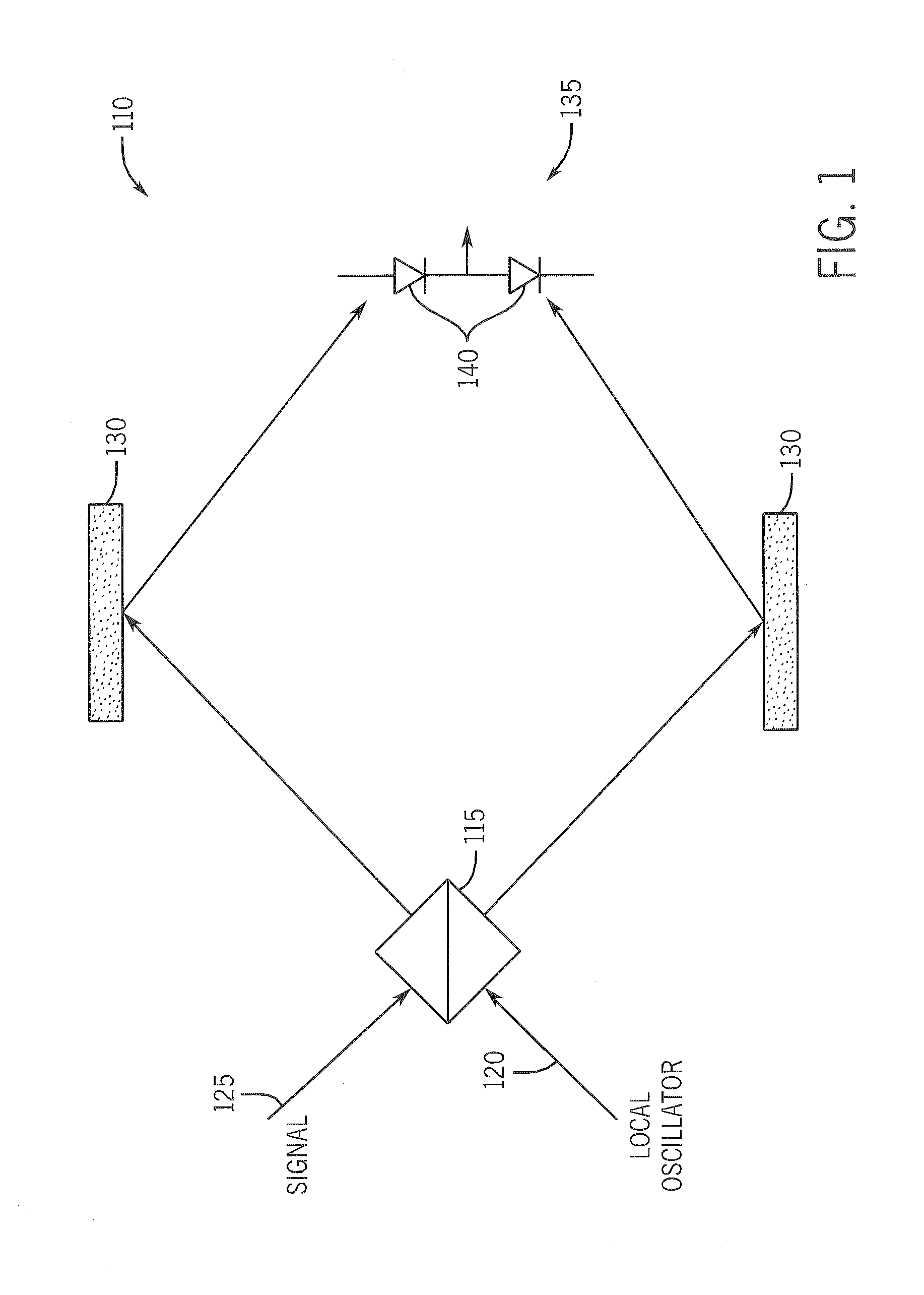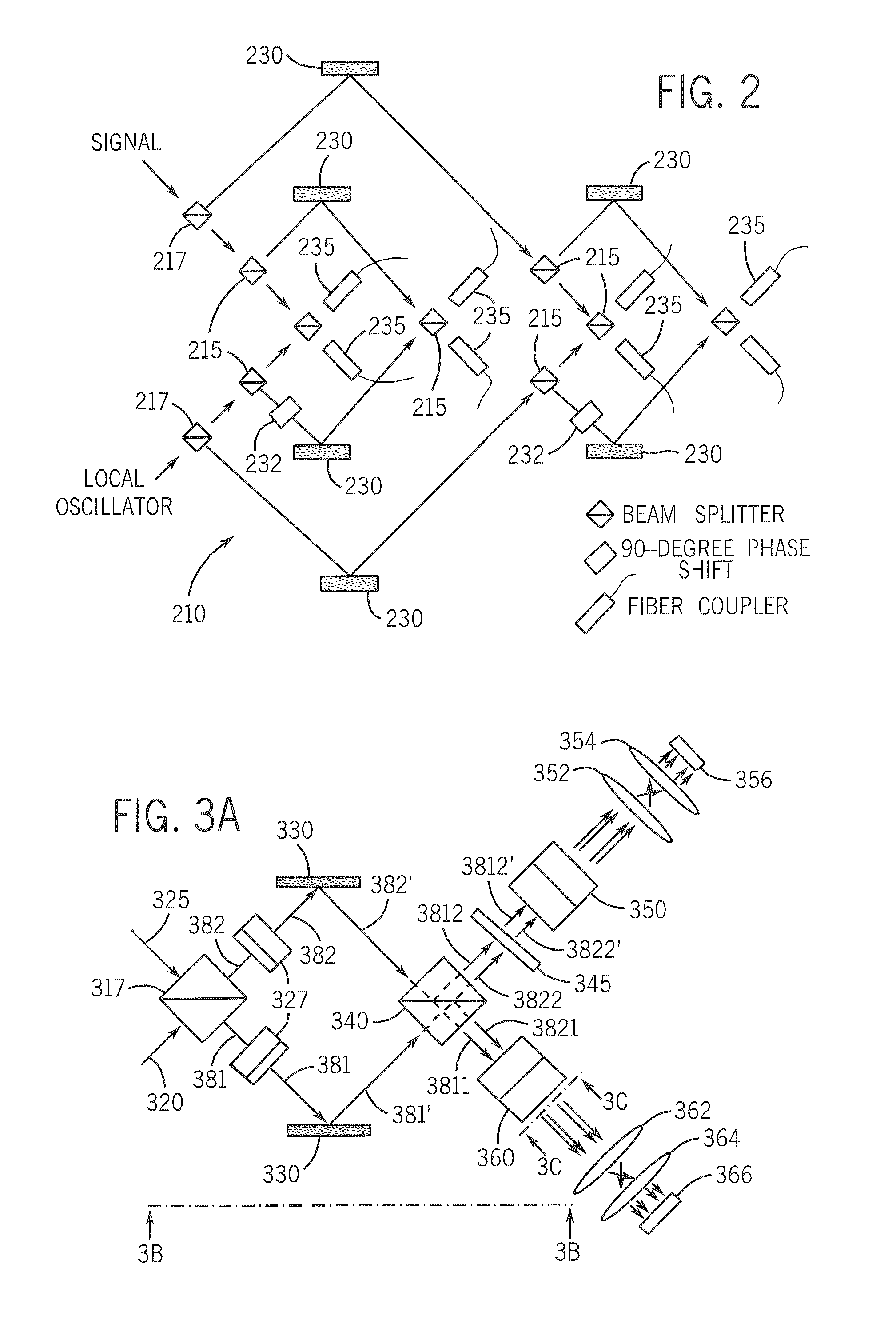[0014]Beams used in differential detection are composed of interferometer terms for each polarization. A
common path interferometer is advantageous in removing common-mode
noise such as fluctuation in the total
path length due to temperature variation (two outputs of a
beam splitter create a balanced signal that can be detected with a balanced
photodiode / receiver arrangement). Novel and non-obvious embodiments of a Savart device disclosed and claimed herein use two birefringent crystals (or plates) with optic axes oriented at 90° with respect to each other to equalize
path length and generate the needed differential beams. This eliminates PBS cubes and other earlier devices that introduce difficult path-length matching of cube outputs that emerge at 90° angles and require optical elements to steer them back to the balanced detectors (a half-wave
waveplate also is needed to keep the beams in the plane of the apparatus). The Savart device (also referred to as a Savart polariscope or Savart plate) generates two output beams both displaced laterally in two orthogonal directions from their input beam. Rotation of the Savart device by 45° eliminates the
waveplate while maintaining horizontal beam separation, which is advantageous for vertically multiplexed beams if the goal is a square pattern. A benefit of the Savart device as a
polarizer in a receiver is that spurious
noise from optical reflections is eliminated. Moreover, a pair of input beams can be processed into four Savart device output beams for imaging onto a specialized
photodetector array that utilizes close orientation of photodiodes for balanced detection.
[0015]Detection techniques and apparatus include novel and non-obvious embodiments in which photodiodes are incorporated into the optical
assembly (for example, mounted to a
chip, die, substrate or the like), thus removing intervening fiber connections and eliminating excess optical loss that otherwise occurs. In some embodiments, the photodiodes are included in the optical
assembly, providing an additional degree of freedom since the detectors need not be designed for
fiber coupling and allowing many more detectors and amplifiers to be incorporated onto one
chip. Earlier coherent receiver designs required separate optical and
detector assemblies, necessitating
coupling in and out of single-mode fiber and resulting in a minimum of 0.2-dB of additional optical loss at each fiber interface due to the difficulty of perfectly mode-matching and anti-reflection-
coating the fiber. Also, each of these earlier
system fiber couplings added substantial cost due to ruggedizing the connection. Cost was multiplied when more high-frequency packages were required. Earlier system separation of the detector / receiver assembly from the
optics also led to imperfect path matching, impacting noise rejection provided by balanced detection. A 30-dB rejection ratio requires
amplitude response matching to 3% and
path length matching to <1% of the
symbol period (<1 ps for 10 Gbaud), matching nearly impossible with a separately packaged detector / receiver.
[0016]Using embodiments of the detection apparatus, beams can be simply imaged onto detectors arranged in any pattern that is convenient for the optical assembly and
electrical design. Another
advantage of imaging onto detectors is that detector spacing can be quite close, thereby reducing stray
capacitance when detectors are coupled together to provide a balanced output. This is done while maintaining practical beam separation in the
optics. In addition to reducing cost and optical loss, including detectors in the optical assembly and using telescopic imaging for
photodiode coupling relaxes alignment tolerances by the
telescope magnification. Unlike
optical fiber, a
photodiode is effective at receiving light from almost any angle in 2π steradians (earlier coherent receiver optical assemblies needed alignment at the output plane to a fraction of the fiber core
diameter and a fraction of the acceptance angle). Embodiments of the new detection apparatus require alignment to about 50 microns.
[0017]In one specific embodiment, detectors are arranged in a square pattern to allow four beams to be readily imaged onto the detectors with a simple telescopic lens arrangement. The square pattern minimizes the lens clear-aperture needed and the detector die-size and simplifies access to the two outputs of the two pairs of diodes with outputs on opposite sides of the
chip. Integrating the four detectors onto one chip provides precisely controllable detector locations that can be coupled to the optics without individual manipulation of each detector's coupling.
 Login to View More
Login to View More  Login to View More
Login to View More 


